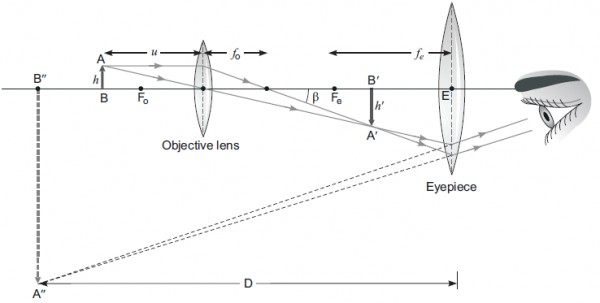(a) Labelled diagram of compound microscope.
The objective lens form image A' B' near the first focal point ofeyepiece.

(b) Angular magnification of objective lens m0 = linear magnification h'/h

where L is the distance between second focal point of the objective and first focal point of eyepiece. If the final image A'' B'' is formed at the near point.
Angular magnification me = (1+ D/fe)
If the final image A'' B'' is formed at infinity, then angular magnification me =D/fe . . . (2)
Thus, total magnification of the compound microscope
M = m0 x me
= L/f0 x D/fe
(c) Aperture and focal length increase or decrease the resolving power of the compound microscope.
Resolving power of microscope is given by
R.P. = (2n sinθ)/(1.22λ)
(i) On decreasing the aperture (diameter) of the objective lens, value of sin q decreases, and hence resolving power decreases.
(ii) On decreasing the focal length of the objective lens, value of sin q increases and hence resolving power increases.